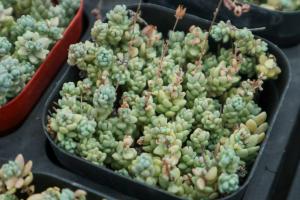Is it OK to Top Tomato Plants?
As gardeners, we often find ourselves wondering how to get the best possible yield from our crops. Tomato plants, in particular, can be challenging to manage, especially when it comes to pruning. One of the most common questions that gardeners ask is whether or not it's OK to top their tomato plants. The answer is not a simple one, and it depends on several factors.
What Does "Topping" Mean?
Topping is the process of removing the top part of a tomato plant's main stem. This is usually done by cutting off the top of the plant just above the last leaf node. The purpose of topping is to encourage bushy growth and increase the number of fruit-bearing branches. However, topping can also affect the plant's overall health and yield, depending on when and how it is done.
When is it OK to Top Tomato Plants?
Topping is best done when the plant is still young and has not yet started producing fruit. This is usually around four to five weeks after planting. At this stage, topping can stimulate the plant to produce more side branches, thus increasing the number of fruit-bearing branches. However, if topping is done after the plant has started to produce fruit, it can reduce the overall yield and cause the remaining fruit to be smaller in size.
How Should Tomato Plants be Topped?
The technique of topping a tomato plant should be done carefully, to avoid causing unnecessary damage to the plant. The best way to do this is by using a sharp, clean pair of scissors and cutting just above the last leaf node. It is also important to make the cut at an angle, so water can run off and not stagnate on the cut stem. Additionally, it is critical to make sure the plant is well hydrated and healthy before topping it.
What are the Risks of Topping?
While topping can increase the number of fruit-bearing branches, it can also cause some adverse effects. One risk of topping is that it can make the plant more susceptible to diseases and pests. Another risk is that topping can cause the plant to expend its energy on producing more branches and leaves, rather than on producing fruit. As a result, the fruit that the plant does produce may be smaller in size and less flavorful.
Conclusion
While topping tomato plants can be an effective way to increase yield and manage garden space, it is something that should be done with caution. Topping should only be done when the plant is young and healthy and has not yet started producing fruit. Before topping the plant, it is essential to ensure that it is well hydrated and free from disease and pests. Ultimately, it is better to err on the side of caution and avoid topping plants that are already producing fruit to ensure a bountiful harvest.

 how many times do yo...
how many times do yo... how many planted tre...
how many planted tre... how many pine trees ...
how many pine trees ... how many pecan trees...
how many pecan trees... how many plants comp...
how many plants comp... how many plants can ...
how many plants can ... how many plants and ...
how many plants and ... how many pepper plan...
how many pepper plan...
































